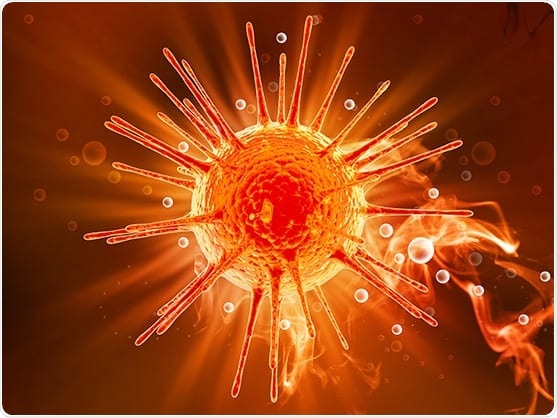AMSBIO have supplied custom lentivectors to Francesco Pampaloni and his team at the Buchmann Institute for Molecular Life Sciences (BMLS) in Frankfurt, Germany allowing them to visualize cell nuclei and F-actin cytoskeleton in their organoids.

Organoids are morphologically heterogeneous 3-dimensional cell culture systems that provide an ideal model for understanding the principles of collective cell behavior in mammalian organs during development, homeostasis, regeneration, and pathogenesis. To investigate the underlying cell organization principles of organoids, BMLS researchers imaged hundreds of pancreas and cholangiocarcinoma organoids in parallel using microscopic techniques.
As a result of this pioneering work – BMLS researchers were able to monitor development and quantify the behavior of organoids at the single-cell (microscale), individual-organoid (mesoscale), and entire-culture (macroscale) levels. These detailed individual organoid quantifications have helped BMLS to produce a mechanical 3D agent-based model for the pancreas and cholangiocarcinoma organoids under study.
Michael Koch, a Ph.D. student within the BMLS research group said “As epithelial organoids have a stem cell-like character, which makes them difficult to transduce, they require optimized transduction protocols. AMSBIO custom high-titer lentiviral particles offered us an ideal solution to this issue. By labelling (epithelial) organoids with H2B-eGFP and LifeAct-mCherry, using AMSBIO lentivectors/lentiviral particles, we were able to study dynamic cellular processes in organoid development (by light sheet microscopy/LSFM) over several days with a stable fluorescence signal. These custom lentivectors enabled us to gain intricate insights into highly dynamic processes in epithelial organoid development like formation, polarization, and luminal expansion. Throughout our research – AMSBIO offered great support through discussing possible options in vector design for optimal delivery and expression our organoids. We highly recommend AMSBIO custom lentivirus for fluorescently labelling demanding/delicate cells in long-term live microscopy studies and would not hesitate to use their service again”.
Dr Maja Petkovic – a business unit manager at AMSBIO commented "We were delighted to be selected by the BMLS researchers to supply lentivirus expressing fluorescent fusion proteins H2B-eGFP to visualize cell nuclei and LifeAct-mCherry to visualize the F-actin cytoskeleton thereby enabling them to track the cellular dynamics of their organoid development".
Our lentiviral vectors are valuable gene delivery tools. We can offer a custom service to make ready-to-use constitutive or inducible over-expression lentivirus for any specific gene. We will sub-clone your selected genes into our lentivirus expression vectors and produce expression lentivirus for each gene".
Dr Maja Petkovic, Business Unit Manager, AMSBIO
AMSBIO's lentiviral system is a novel gene delivery tool using lentivectors for gene expression or knockdown. Lentivirus can effectively transduce both dividing and non-dividing mammalian cells, and integrate into the host genome, allowing stable long-term, high-level gene expression both in vivo and in vitro. Unlike traditional retroviral system, the AMSBIO lentivirus is much more actively imported into the nuclei of non-dividing cells and stably integrated into the host cell's genome independent of cell cycle.
AMS Biotechnology (AMSBIO)
Posted in: Cell Biology | Life Sciences News
Tags: Actin, Cell, Cell Culture, Cell Cycle, Cholangiocarcinoma, Cytoskeleton, Fluorescence, Gene, Gene Expression, Genes, Genome, in vitro, in vivo, Lentivirus, Mammalian Cells, Microscopy, Organoids, Pancreas, pH, Research
Source: Read Full Article
